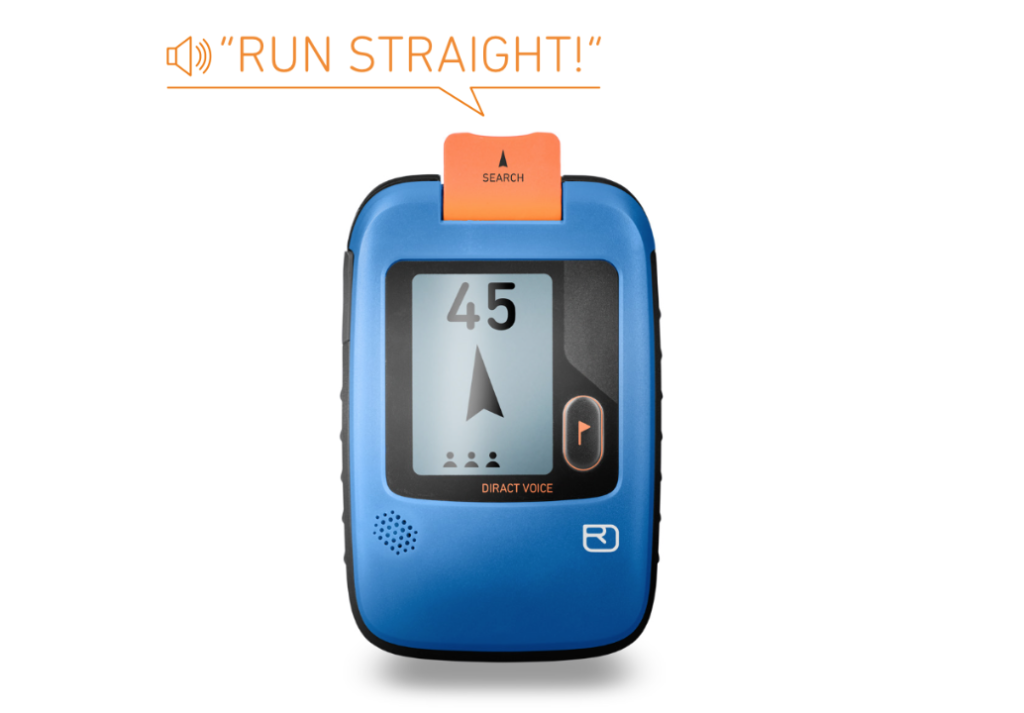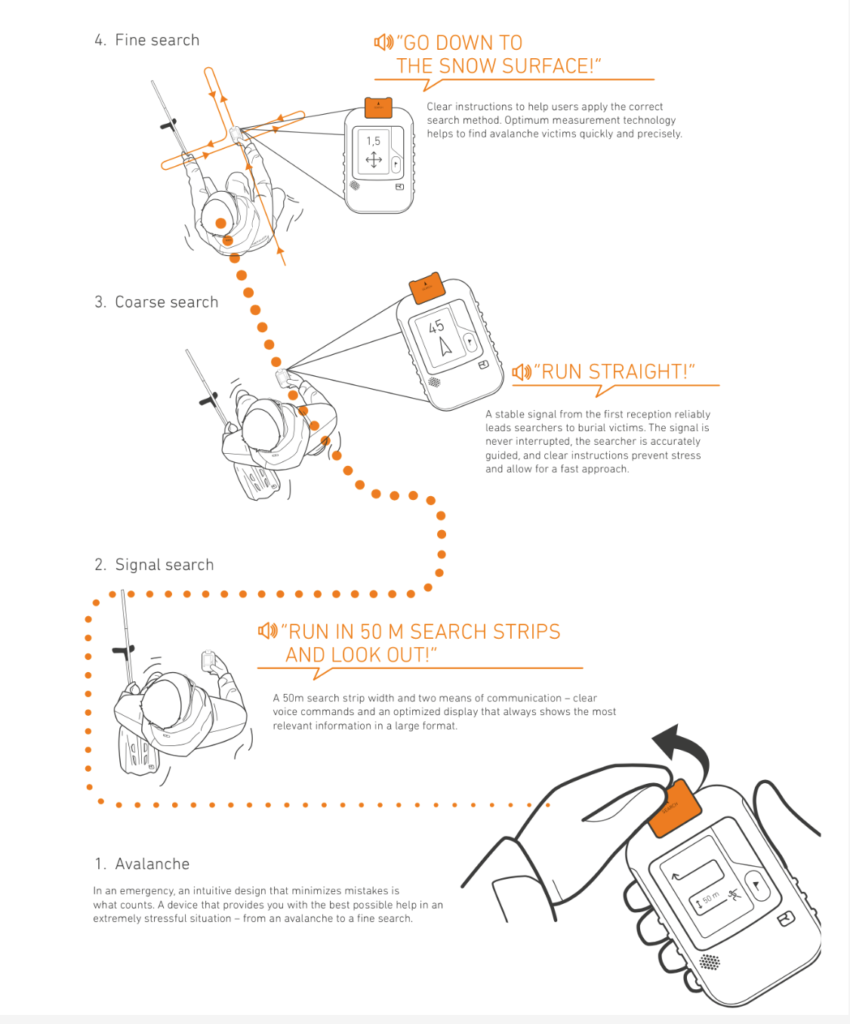Ortovox Diract Voice: A Transceiver with Voice Navigation
Upon first learning about Ortovox’s new Diract Voice transceiver, I was hesitant to give it an objective look and even made a few jokes about it. (The name, for starters, sounds like what a German-speaker would say while getting sick off too much schnapps.) A talking transceiver seemed like an overuse of technology, and it seemed to be yet another marketing tactic in “The Beacon Wars”—endless and sometimes vicious marketing battles between transceiver manufactures.
However, upon reflecting on the rescue training courses I provided as an AIARE instructor, I recalled that specific, concise voice instructions and encouragement during rescue training accelerated the learning process. Some of those same verbal instructions we utilized are integrated into Ortovox’s voice navigation technology, and I decided to spend time learning more about this new transceiver.
Tom Mason, brand manager for Ortovox U.S., was kind enough to spend a few hours educating me on the Diract Voice. I’ll have to wait until September when it’s available to actually use and write a proper review, but after my conversation with Mason, I feel this new technology could be transformational.
Ortovox has been working for more than five years to develop the Diract Voice, and is still patiently waiting to formally release the product to ensure it’s ready. The goal was to provide an extremely simple and intuitive transceiver that features the world’s first voice navigation. The patented voice technology is designed to support a user during every phase of the transceiver search and provide calm and clarity to counter the stress of a rescue.

The voice navigation is designed around the following four principals:
1. Ortovox studied and identified when people struggled during a transceiver search. They combined this with the understanding that voice instructions require less cognitive capacity (which is certainly limited during a rescue) than visual information, which needs to be processed before the brain translates into action. By offering clear and concise voice commands when people typically struggle, they hope to make rescuers faster and enable them to quickly correct errors.
2. During a stressful event (such as a rescue), hearing a voice can calm a person and provide a feeling of support.
3. While in the course phase of a search, voice commands reduce a rescuer’s tendency to overfocus on the transceiver screen and increase the ability to maintain situational awareness.
4. Voice technology can provide instructions that are difficult, if not impossible, to provide visually on a small screen. For example, “go down to the snow surface” would be difficult to view on a screen, yet easy to relay via a voice command.

What also captured my interest (in addition to voice navigation) is the simple and intuitive design. Mason said they fully expect people to pull it out of the box and be underwhelmed, because the user interface is designed to look plain and operate easily. The advanced technology is designed to be unobtrusive to the user. Their hope is that anyone can pull it out of the box and figure it out without an instruction manual (which, according to my wife, most men wouldn’t read regardless).
Other features include a marking function, a 360 degree real-time display, self- and group-check, auto revert plus motion sensor, and a rechargeable lithium ion low-temperature battery. Physically the beacon is slim, relatively small, and features rubber around the edges so you can grip it with gloves on. It begins shipping in the U.S. and Canada in September for $380 (U.S.) for the voice and $320 (U.S.) for the non-voice version.
The Diract Voice sounds promising, and I’m interested. Let’s see what it’s like when we get a chance to use one come September.
Through backcountry skiing, Paul Rogers has found incredible happiness, lasting friendships, and the opportunity to traverse the snowscape across Europe and North America. He founded Powder Cloud to help others safely find the same.



